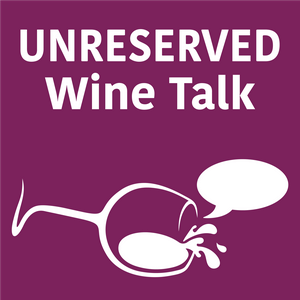356: Why is Geology Essential for Vineyard Management but Overrated When It Comes to Wine Taste? Dr. Alex Maltman Shares Soil Secrets
Why is geology essential for vineyard management but overrated when it comes to wine taste? Do soils get too much credit for wine flavour, when invisible factors might be the real drivers? What does “minerality” in wine really mean? Rock, nutrient, or just taste perception? In this episode of the Unreserved Wine Talk podcast, I'm chatting with Alex Maltman, author of the terrific new book, Taste the Limestone, Smell the Slate. A Geologist Wanders Through the World of Wine. You can find the wines we discussed at https://www.nataliemaclean.com/winepicks Giveaway Two of you are going to win a copy of Alex Maltman's terrific book, Taste the Limestone, Smell the Slate. A Geologist Wanders Through the World of Wine. To qualify, all you have to do is email me at
[email protected] and let me know that you’ve posted a review of the podcast. I’ll choose two people randomly from those who contact me. Good luck! Highlights How did a good teacher spark Alex’s lifelong fascination with geology? What initially attracted Alex to wine and how did his curiosity evolve over the past 50 years? How did Alex’s background in geology support his career as a wine writer? In what ways does Alex’s first book, Vineyards, Rocks and Soils, differ from his new book, Taste the Limestone, Smell the Slate? Why does Alex believe that the influence of geology on wine is overstated in contrast to its influence on beer? What impact did geology have on how beer first developed? How do geological minerals, nutrient minerals, and the taste perception of minerality differ? What is the relevance of geological age to the growing vine in the bedrock? Does knowing the soil type of the vineyard tell us anything about the wine’s characteristics? Why do so many wine drinkers and writers love to talk about geology? How has the concept of terroir been misunderstood and oversimplified? Why is it important to distinguish between the importance of geology for vineyard management versus its influence on the taste of wine in the glass? Key Takeaways Am I tasting the limestone, smelling the slate? No, you can't. The grower needs to know about his soil. The geology will influence so many things in the vineyard, so the grower may well want to dig soil pits and see what the roots are doing to inform his vineyard management. But this is not the same thing as the flavor that develops in fermentation through to our wine glass. People look at, say, a hill slope with vines on it, and year after year, the wines from here always taste different to the wines from there. What's different? Oh, it's the soil. But at the same time, there's a whole host of invisible factors operating on that hill slope that we know these factors influence how grapes ripen and how the flavor precursors in the grape develop, which are going to go on to in the fermentation make the wine taste like it does. I tend to use the word geological mineral for those compounds that are making half of the vineyard soil and that come together to make rocks. And nutrient mineral, which are single elements, which we need, as well as vines, in order to function. And this word minerality, that's a taste perception. I don't know what it means or what causes it, but that's a different third meaning of the word mineral. About Dr. Alex Maltman Alex Maltman is Emeritus Professor of Earth Sciences at Aberystwyth University, in Wales, U.K. Alongside a decorated career in university teaching and research, Alex has for fifty years grown vines and made wine at his home. And through this, perhaps inevitably, he became interested in vineyard geology and its fashionable but poorly understood relationship with wine. This led to numerous publications in both the popular press and academic journals. Alex is the author of the acclaimed Vineyards, Rocks, and Soils: A Wine Lover’s Guide to Geology and newly released Taste the Limestone, Smell the Slate. A Geologist Wanders Through the World of Wine. To learn more, visit https://www.nataliemaclean.com/356.


